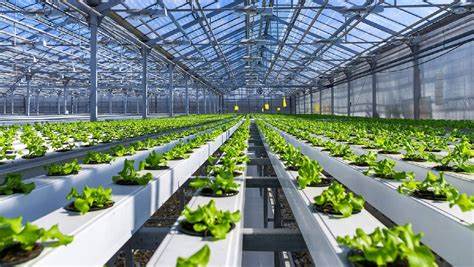
Vertical Farming and Sustainable Packaging: A Revolution in Agriculture and Environmental Conservation
Introduction
Vertical farming and sustainable packaging have gained significant importance in recent years. This article aims to provide an overview of these concepts, their historical background, definitions, and significance in today’s world.
Historical Background:
The history of vertical farming can be traced back to the ancient Hanging Gardens of Babylon. However, it gained momentum in the late 20th century. Sustainable packaging has evolved alongside environmental concerns and technological advancements.
Key Concepts and Definitions:
Vertical farming involves growing crops in vertically stacked layers, using technologies like hydroponics and aeroponics. Sustainable packaging refers to using materials and techniques that minimize environmental impact throughout a product’s lifecycle.
Main Discussion Points
Benefits of vertical farming
Increased crop yields and land efficiency: Vertical farming allows for higher crop production per square foot of land, addressing food shortages.
Reduction in water usage and environmental impact: Techniques like hydroponics reduce water consumption and negative effects on water resources.
Year-round production and climate control: Vertical farms provide consistent supply regardless of weather conditions.
Advantages of sustainable packaging
Reduction of waste and environmental impact: Sustainable packaging minimizes waste generation and environmental pollution.
Use of renewable and recyclable materials: Bioplastics and recycled paper promote renewable resources and reduce dependence on fossil fuels.
Consumer perception and market demand: Growing awareness about environmental concerns has increased the demand for sustainable packaging.
Case Studies or Examples
Vertical farming case study: AeroFarms
AeroFarms is a vertical farming company that uses aeroponic systems to grow leafy greens and herbs.
Their practices have improved crop yield, reduced water usage by up to 95%, and minimized transportation costs and carbon emissions.
Sustainable packaging example: Loop
Loop offers a reusable packaging system designed to eliminate single-use waste.
Consumers return empty containers, which are cleaned and refilled, reducing packaging waste and promoting a circular economy.
Current Trends or Developments
Technological advancements in vertical farming
LED lighting, automation, and data analytics have revolutionized vertical farming, improving crop management, energy efficiency, and yields.
Innovative sustainable packaging solutions
Researchers explore mushroom-based packaging and edible packaging to enhance sustainability and reduce environmental impact.
Research findings on the impact of vertical farming and sustainable packaging
Studies highlight vertical farming’s positive impact on resource conservation, food security, and urban agriculture. Research on sustainable packaging shows its potential to reduce waste and promote a sustainable consumer culture.
Challenges or Controversies
Criticisms of vertical farming
Energy consumption and artificial lighting: Vertical farming requires significant energy inputs, raising concerns about its environmental footprint.
Cost implications and scalability: Initial investment and scaling up operations pose challenges for small-scale farmers.
Controversies surrounding sustainable packaging
Biodegradability vs. recyclability debate: The sustainability of biodegradable packaging compared to recyclable packaging is debated.
Consumer education and behavior change: Proper disposal and recycling practices require consumer education and behavior change.
Future Outlook
Potential for vertical farming to revolutionize agriculture
Vertical farming can address food security, reduce reliance on traditional agriculture, and make urban farming sustainable.
Development of new sustainable packaging materials and technologies
Ongoing research will lead to advanced and sustainable packaging materials, reducing environmental impact.
Integration of vertical farming and sustainable packaging in urban environments
Integration can create self-sufficient and sustainable ecosystems by reducing food miles, waste generation, and promoting local economies.
Conclusion
Vertical farming and sustainable packaging are crucial for food security and environmental conservation. With their benefits and ongoing advancements, they have the potential to revolutionize agriculture and promote a sustainable future. Businesses, consumers, and policymakers must recognize their importance for a sustainable and resilient world.
References
Books, research papers, and scientific journals
Websites and industry reports
Relevant organizations and experts in the field